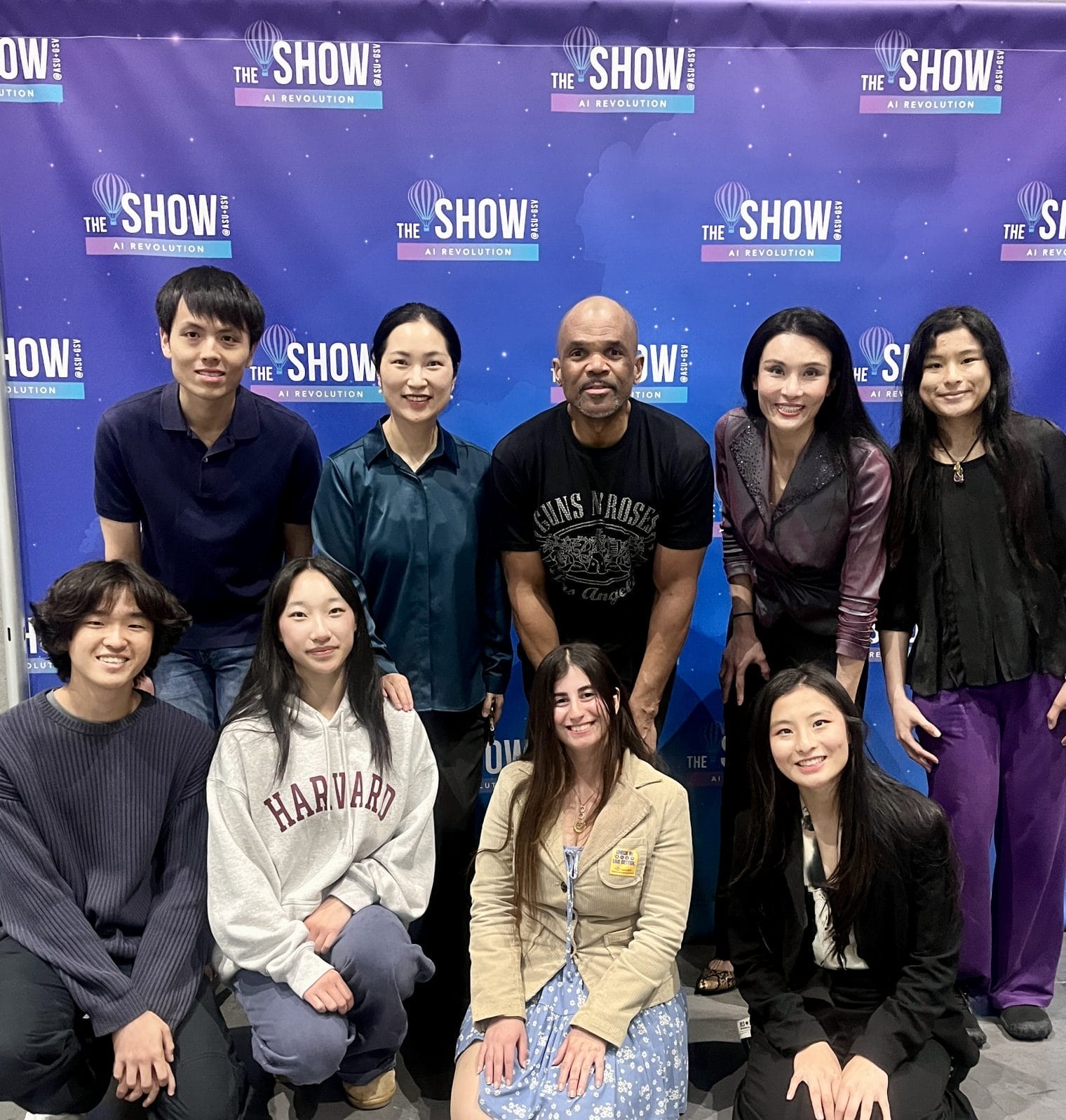More than 10 years ago, I led teams in 20×30 double-decker booths at major trade shows. CES, NAMM, Infocomm, ProLight+Sound. Big budgets, big lights, big business. This year, I found myself leading 15 first-timers in a 3×3 space.
Smaller footprint. Wildly bigger impact.
But let me back up.
We signed up for the show just a month in advance. I was excited, but truthfully, stressed. Trade shows don’t usually faze me—I’ve done them for decades. But this one was different. With limited time, I had to make a strategic decision: do I prep seasoned sales reps who could hold polished conversations and push partnerships forward? Or do I bring in our Youth Ambassadors and volunteers—the community members who’ve been building curaJOY with us from the start?
On paper, the choice seemed obvious. This was an AI event. A high-stakes opportunity to grow our network, secure new support, and demonstrate our value to potential partners.
But in my gut, I knew what mattered more.
This was a moment to walk the talk—to choose the path that aligned with our mission, not just business outcomes. Our Youth Ambassadors had been there through testing, content creation, early pilots. They weren’t outsiders; they were co-creators. And if we’re serious about building community-led, human-centered AI, then these were the people who deserved to be there—with support, with coaching, and with me by their side.
curaJOY doesn’t just develop AI to address behavioral health. We invest in communities to co-create the tools they need—tools that work for real people, in the real world. That means youth. That means introverts. That means folks who don’t always get invited into (or stay in) the design process. And empowering them doesn’t just mean inviting them to observe—it means preparing them to contribute, speak, lead.
I didn’t know how I could do what I’ve always done—run the floor, pitch our solution, juggle meetings—and also guide a team that had never done this before. That tension sat with me every hour leading up to the show.
We rehearsed the night before. I personally wrote the scripts and tradeshow playbook for them. We role-played intros and pivots. With the added concern of nearby protests, I couldn’t take any chances. I had to make a call: chase short-term pipeline, or honor our long-game mission.
I chose the long game.
Still, on the first day, within the first hour, a few came back visibly shaken.
“Put me in the back room. I’m not built for this.”
“Nobody wants to talk to us. I get the first question out, but then I freeze. I suck at this.”
We were doing hourly retros. Each team came back to share blockers. I troubleshooted in real time, rewrote lines, role-played tricky moments. And for those who were ready, I gave them the next progression: how to ask follow-ups, build bridges between sessions, or transition into emotional check-ins.
When telling didn’t work, I showed them. We walked the floor together. I brought them into my conversations so they could shadow, absorb, and step in when they were ready.
By the end of the show, they weren’t just hanging back—they were energized. Curious. Proud of whom they’ve met. Total strangers stopped by to say they were impressive. One of our high schooler’s teachers made a point of finding me to say “I was so surprised to see her talking and interviewing on the floor. I didn’t know she had it in her!”
Those are the moments. 💖
I didn’t make my usual rounds. But I didn’t miss out on anything that really mattered.
When you stay grounded in your why, you don’t have regrets.
This AI Show and all the other little moments in the past four years are the clearest reflection yet of how curaJOY builds.
We don’t outsource empowerment. We coach it. Scaffold it.
We don’t just gather community input—we upskill the community to shape the product.
We don’t just want kids to complete a curriculum—we want them to own it, share it, and evolve it for their peers.
There’s no shortage of evidence-based interventions out there. The real challenge is consistency, frequency and intensity. We believe you solve that by making things meaningful, fun, and community-driven. That’s why our Youth Ambassadors are not beta testers. They’re builders. They’re storytellers.
We don’t have the financial might to hand out stipends or pay them for surveys and sessions like many others do to keep kids and parents engaged.
We invest in them.
We equip them.
And they leave with something money can’t buy.
–that’s why they’ve stayed and will continue to build with curaJOY.
So much of trade show culture remind me of how the world tends to reward the loudest voices, the biggest wallets—the ones who’ve been trained or encouraged to take up space from a young age.
But that’s never been my style.
Being an introvert myself, I’ve spent a lifetime navigating spaces that don’t always make room for thoughtful pauses or quiet conviction. Whether I fall in more as INTJ or ENTJ these days, what hasn’t changed is my belief that real innovation doesn’t come from the loudest voice in the room—it comes from those who ask better questions, who listen more than they speak, who build for everyone.
That’s the future we’re building at curaJOY. And that’s why I knew this trade show couldn’t just be about pitch decks and partnerships. It had to be about presence. About creating space for young people—and quieter ones—to lead, connect, and grow.
The conversations that resonated most weren’t about deals or demos. They were about purpose. Daryl from Run DMC discussed with our team a prevention-based approach—how keeping kids off the streets starts with building emotional resilience early. Professors Marc Brackett and David Yaeger echoed the importance of going beyond awareness to lasting behavioral change. These insights aren’t side notes—they’re foundational to how we design curaJOY’s solutions.

The biggest ROI wasn’t in the business cards. It was in the confidence that grew across three days of eye contact, pivots, reflection, and courage, and the next generation of AI builders, educators, and change-makers curaJOY is cultivating.”.
If we want AI that reflects humanity, we have to build it with humanity.
Let youth, parents, educators, and clinicians lead in AI for education and behavioral health.
Coach—or even handhold—through discomfort. Choose depth over speed.
It wasn’t the trade show I expected—but it was the one I’ll never forget.
And this mama banana couldn’t be prouder.





Leave a Reply